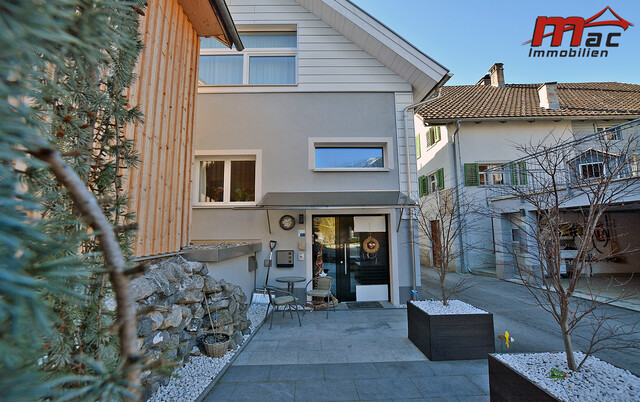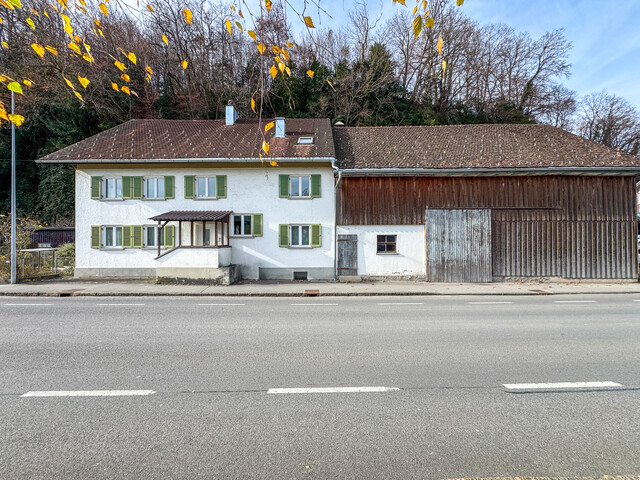New Savings Package: An Overview of All Measures
The subsidy-rich country of Austria will see reductions with the double budget for 2025/2026. The aim is to reduce expenditures in this area by 1.3 million each. The environmental sector is particularly affected, but development cooperation, culture, and sports will also face cuts. Broadband subsidies and investment premiums are among the other budget "victims."
Of course, the reduction in subsidies with the double budget is not the end. On the contrary, the savings volume is expected to reach 2.1 billion by 2029, the last year of the new financial framework.
The Ministry of Finance explains the savings in subsidies by citing a significant increase in recent years. In 2019, federal disbursements for subsidies amounted to 6.4 billion. This figure has roughly doubled by the previous year.
Already 557 million in savings are planned for environmental subsidies this year. Alone, 328.5 million will be cut from the Climate Fund, which equates to a reduction in subsidies by half. There will be 177 million less for the transformation of industry and energy efficiency. In addition to environmental subsidies, measures related to the climate ticket (abolition of the free ticket for 18-year-olds and price increases) are listed as a separate point, expected to bring in 120 million this year and 150 million from next year.
Decline in Broadband Subsidies and Investment Premiums
The subsidization of broadband funding will be significantly reduced. This year, 150 million will be cut. Close behind is the investment premium, with savings of 130 million. Originally, 383 million were budgeted for it. From 2026, the instrument will no longer exist. There will be 110 million less for agriculture, forestry, and water management. For example, subsidies for comprehensive crop insurance will be reduced. Additionally, 20 million will be withheld from the Forest Fund, with half being recorded not as subsidies but as departmental savings.
After sports were recently well-funded, subsidies will now be reduced by 15 million. Ten million of the savings come from special sports funding and five million from general sports funding.
The outlook is not much better for art and culture. Every year, five million in subsidies will be cut. This area also recently saw a massive increase in funding.
Furthermore, the Federal Chancellery lists "budgetary adjustments" in subsidies for the protection of religious minorities. Other ministries, such as the social and interior departments, generally promise a resizing of subsidies.
The consolidation strongly affects development cooperation and the foreign disaster fund. Ten million this year and 40 million next year will be cut.
From next year, it is hoped that subsidy amounts will be significantly reduced again, thanks to savings ideas from the established subsidy task force. For 2026, 150 million are already budgeted under this title. By 2029, the aim is to generate 800 million by foregoing unnecessary subsidies.
Budget: Tax Revenues Flow Less, Tax Rate Rises
In light of the bleak economic situation, tax revenues are flowing less than expected. For gross taxes, an increase of 3.1 billion euros to 116 billion is expected in 2025 compared to the previous year. This is 2 billion less than estimated in the financial framework created in 2023. In the coming years, tax revenues are also likely to be lower than expected despite tax increases due to the weak economy. Nevertheless, the tax rate will rise to around 45.5 percent of GDP in 2026.
Due to the weak economy, corporate and income taxes will decrease by about 0.1 percentage points of GDP each in 2025. The tax-free employee bonus also has a dampening effect from the finance minister's perspective. Nevertheless, revenues from wage tax are increasing more than expected due to wage increases. In 2025, 1.1 billion more in wage taxes will flow into the state budget than in the previous year, and thus 500 million euros more than according to tax estimates in the financial framework 2024-2027. However, revenues from value-added tax, capital gains tax, corporate tax, and mineral oil tax are flowing less than assumed.
Thanks to the tax measures already decided by the tripartite coalition, additional revenues are coming from the bank levy, energy crisis contribution, and energy levy. The comparatively low asset-effective taxes are increasing due to the intensified taxation of foundations from 30 to more than 60 million euros in 2026.
The overall tax and levy rate is growing this year from 44.5 to 45.3 percent of GDP and next year to 45.5 percent. By 2029, the tax rate is expected to slightly decrease to 45.4 percent according to the financial framework. The goal set by ÖVP and NEOS of a tax rate towards 40 percent remains far off for the time being.
The targeted reduction in ancillary wage costs from 2027 is currently not financially feasible according to Finance Minister Markus Marterbauer (SPÖ), unless counter-financing is found through further measures.
Major Cost Drivers are Pensions and Interest
State expenditures have massively spiraled out of control in the past year, as shown by the enormous expected budget deficit of 4.5 percent of GDP this year. The biggest cost driver is pensions, which account for more than a quarter of the total federal budget expenditures. Notable are also the rising interest expenses due to high national debt, which increasingly burden the budget.
The largest item in budget disbursements by far is pensions. 32.9 billion euros are budgeted for this in 2025, which is 2.8 billion more than the previous year. Next year, the federal subsidy for pensions will rise to 34.2 billion. The reason for the increase this year, in addition to demographic development, is that the adjustment factor of 4.6 percent, which compensates for the previous year's inflation, is significantly above the nominal growth of 2.2 percent.
Even next year, pensions will remain by far the biggest cost driver due to demographic development. The government's measures change little in this regard. With the introduction of partial pensions, the employment package for older workers, and a more difficult access to corridor pensions, 633 million euros are expected to be saved next year, with slightly more savings in the following years: By 2029, the amount will rise to at least 1.9 billion euros.
Increasing financing costs are also a growing burden on the budget. Due to high national debt, 8.4 billion euros must be paid this year alone for interest and other financial expenses. This is 1 billion more than the previous year and corresponds to 1.5 percent of the gross domestic product (GDP). Next year, financing costs will rise to 8.9 billion or 1.7 percent of GDP. The increase continues and reaches 9.9 billion euros or 2.4 percent of GDP by the end of the financial framework period in 2029.
Despite Austerity Pressure, Investments Are Also Made
The fact that the government has to save so much is also due to the fact that offensive measures are being taken in certain areas. This year, 600 million are planned for this, and next year 1.6 billion. From 2027 to 2029, 1.8 billion are budgeted for each year under this item. Among other things, investments are being made in the employment of older people, a second kindergarten year, and language promotion.
The largest part overall falls in the area of economy and labor, where 476.5 million are planned for this year alone. This is followed by the education sector with an initial 120 million.
Next year, the government will allocate 300 million for making work in old age more attractive. A model is planned in which, firstly, the additional income of employees eligible for old-age pensions will be taxed at a final rate of 25 percent, and secondly, employees will be exempt from social security contributions. Employers only have to pay half the contribution to pension and health insurance, while the remaining ancillary wage costs remain the same. 40 million are reserved for extending the heavy labor pension to caregivers.
230 million this year and 100 million in 2026 are earmarked for a qualification offensive by the employment service. At least 150 million is expected to be the cost next year for the successor to educational leave, the further training period.
While the climate ticket is becoming more expensive, the commuter euro for drivers will be tripled. This will cost 110 million euros next year. The measure is argued as compensation for the elimination of the climate bonus. Specifically, the tax deduction will amount to six euros per kilometer of the simple commuting distance between home and workplace from 2026. The exemption from the standard consumption tax for motor vehicles primarily intended for goods transport will cost 20 million this year and 50 million in 2026.
The "Clean Austria" project will continue. 30 million will be used in 2026 for shifting freight transport to rail.
Tax-Free Employee Bonus
The government is allocating 165 million this year to enable a tax-free employee bonus. This should amount to up to 1,000 euros. Only 85 million are reserved for the coming year.
From the health sector comes the innovation fund to strengthen outpatient care, for which 50 million will be available next year. The VAT exemption for contraceptives and female hygiene products costs 28 million. A total of 86 million is available for relief on prescription fees. 35 million are earmarked for the maintenance guarantee fund.
Over 55 million this year and 90 million next year can be expected by the Ministry of Education for language promotion and violence prevention in schools. 20 million will be used primarily for the opportunity bonus, which goes to schools that are socially particularly challenged. The mandatory second kindergarten year demands 80 million from the budget. The project for free snacks in kindergarten is subsidized with 20 million.
Abolition of Educational Leave Dampens Labor Market Expenditures
The abolition of educational leave, including social security contributions, dampens labor market expenditures by 240 million euros this year and by 650 million euros next year. The government has budgeted around 10.3 billion euros for labor in 2025, as stated in the budget report published on Tuesday. This corresponds to an increase of 164 million euros. On the revenue side, unemployment insurance contributions amounting to 9.7 billion euros are expected.
Vienna. In the coming year, the ÖVP-SPÖ-NEOS government has listed disbursements of 10.34 billion euros and receipts of 10.45 billion euros in the budget subchapter 20 "Work". This would even result in a small surplus.
Since the revenues and expenditures of unemployment insurance can rise and fall in the short term depending on labor market developments, the actual budget revenues and expenditures also change. In its last economic forecast in March, the Wifo expected a decline in the unemployment rate from 7.3 percent this year to 7.1 percent next year. However, if the economic downturn in 2025 is stronger than expected, then expenditures for unemployment benefits will rise and the unemployment insurance contributions made by employees and employers could be lower than expected. Unemployment insurance is managed by the Public Employment Service (AMS).
Expenditures for active labor market policy (labor market promotion budget) are expected to decrease by 42 million euros to 1.427 billion euros this year and increase by 169 million euros to 1.597 billion euros next year, according to the budget report. The active labor market policy of the AMS mainly includes the promotion of vocational training and further education (including training), mobility, and temporarily subsidized employment in commercial enterprises or social companies. The restriction of unemployment benefits for marginally employed persons is expected to bring savings of 110 million euros next year.
Since April 1, no new educational leave applications can be submitted. From the beginning of 2026, the government has a "targeted successor regulation" with the further training period. Around 150 million euros are earmarked for this in the federal budget.
Significant Cuts in Climate Subsidies
The government not only wants to make significant savings in environmental and climate subsidies to consolidate the budget but also wants to charge the energy industry. By extending the "energy crisis contributions" for electricity and fossil fuels, around 200 million euros are expected to flow into the state treasury this year and next year. However, private individuals will also feel the reduction in subsidies for PV systems and the inclusion of electric cars in the vehicle tax.
Specifically, the energy crisis contribution for electricity (EKB-S) introduced at the end of 2022 has been extended until March 2030, and the energy crisis contribution for fossil fuels (EKB-F) until December 2029. Additionally, the investment deductions for EKB-S and EKB-F are being adjusted. The expected annual revenues until then are estimated at 200 million euros. The expiration of the reduction in the energy levy - which is primarily paid by companies - is expected to bring in nearly one billion euros.
Savings in environmental subsidies are expected to contribute 557 million euros to budget consolidation this year, with savings reaching 819.9 million euros in 2026. Among other things, subsidies for the thermal renovation of houses and heating system replacements are being cut, which is expected to leave 21.4 million euros more in the budget this year, with the consolidation contribution reaching 244.0 million euros in 2026.
Climate and Energy Fund to be Halved
The largest portion of savings comes from cuts to the Climate and Energy Fund, where 328.5 million euros are to be saved this year and 335.1 million euros next year by reducing the annual work program by 50 percent. An additional 177.1 million euros this year and 180.8 million euros in 2026 are to be saved through cuts to the industrial transformation support programs and measures to increase energy efficiency.
There are also fewer subsidies for the transformation of the energy system in the area of photovoltaics. The originally planned VAT exemption for the purchase and installation of PV modules until the end of 2025 was prematurely ended on April 1, 2025. This measure is expected to add 175 million euros to the budget this year.
Significant Additional Revenues from Gambling and Betting
As part of the austerity package, the federal government will also impose higher levies on gambling and betting providers. Both gambling levies and betting fees are set to increase, and a "modernization of the gambling monopoly" is expected to bring several million euros additionally into the budget.
Thus, the betting fee increased from two to five percent of the stake on April 1. This is expected to bring 50 million euros to the budget this year, and 100 million euros each in the following years. In contrast, the gambling levy amounts to 16 percent. "Due to the similarity of betting and gambling under the Gambling Act, an alignment of the tax burden is to be achieved here," states the budget report.
Furthermore, the gambling levy for lotteries is to be raised from 16 percent to 17.5 percent. The concession and gambling levy for electronic lotteries (online gambling) is to increase from 40 percent to 45 percent. The gambling levy for state lotteries with gaming machines and for lotteries with video lottery terminals is to rise from 10 percent to 11 percent, and the surcharge levies of the states (amounting to 150 percent of the base levy) are consequently to be increased from 15 percent to 16.5 percent. Additionally, a gambling levy on the administrative cost contribution for lotteries amounting to 7.5 percent is to be introduced. These measures are expected to result in additional revenue of 31 million euros in 2025 and 71 million euros in 2026. According to the budget report, this levy will then continue to rise slightly in the following years.
In Austria, there is a monopoly on gambling, both online and in casinos, which is, however, difficult to enforce online. The gambling levy serves to "avoid incentives for excessive spending on gambling and to combat gambling addiction," with the revenues for the budget being "only a pleasant side effect, not the actual reason for the restrictive policy pursued."
Without further details, a "modernization of the gambling monopoly" is also announced, which is expected to bring in 10 million euros this year, and 20 million euros in each of the following two years. From this title, 90 million euros are budgeted for 2028 and around 100 million euros for 2029.
Reclassification from Agricultural to Building Land Taxed at 30 Percent
The reclassification of agricultural and green land into building land has so far been a very good business for landowners. The state is now taking a share of this. The future "reclassification surcharge" amounts to 30 percent and will be collected with the real estate income tax. It applies to land sales from July 1, 2025, if the reclassification took place from January 1, 2025. This is expected to bring 10 million euros to the budget this year and 30 million euros next year, with 50 million euros in the following years.
In administration, savings of 10 million euros in the area of agriculture and forestry are planned for this year, and 6.8 million euros next year. In the area of environment and climate, it is significantly more: 90 million euros this year and 106.4 million euros next year are planned. In the reduction of subsidies, agriculture and forestry are to contribute 110 million euros this year and 25 million euros next year. For the forest fund, it is 10 million euros this year and 0.5 million euros next year.
In the area of water management, for example, old cases are to be better addressed with water law emergency police measures. As of September of the previous year, the total outstanding claims here amounted to almost four million euros.
In the ministry itself, Agriculture Minister Norbert Totschnig (ÖVP) also wants to save. A "sustainable capping of overtime, business trips, and events in 2025" is intended, with the basis of planning for 2025 being the year 2023.
Health: Increase in 2026
The federal health budgets for this year and the next are characterized by declining disbursements in 2025 (2.8 billion euros, minus 3.7 percent) but sharply increasing expenditures in 2026 (3.2 billion euros, plus 13.3 percent). This is mainly due to a new health reform fund from the pension insurance carriers, reflecting the increase in health insurance contributions for pensioners. The e-card service fee rises from 13.80 to 25 euros.
Specifically, the year 2026 brings additional payments of 376.5 million euros in the healthcare sector. The new fund results in an increase of 497.5 million euros, while at the same time, Covid-19 payments are reduced by 115.3 million euros.
As revealed in the budget report published by the government on Tuesday, the fund's money is to come annually from the pension insurance carriers starting in 2026. It is intended to improve care, reduce waiting times, advance digitalization in healthcare, and increase efficiency (which should contribute to adhering to the cost containment path). The fund is to be legally anchored. Guidelines for the use of funds still need to be developed.
For the federal government, the higher health insurance rates for pensioners mean that it must make higher transfers to the pension insurance carriers. This situation results from the so-called levy rates, based on which the health insurance contribution of pensioners is increased. This effect is neutral at the national level but worsens the balance for the federal sector, amounting to 257.7 million euros in 2025 and 497.5 million euros in 2026.
The social insurance institutions are set to gain significant additional revenue from the planned measures, primarily through the increase of the health insurance contribution for pensioners to 6.0 percent of the gross pension as of June 1, 2025 (0.6 billion euros additional revenue in 2025, 1.2 billion euros in 2026). Additional funds will come from the increase in the e-card fee and its extension to pensioners. Furthermore, the replacement of sickness benefits for the unemployed and the costs for maternity benefits by the Public Employment Service (AMS) will result in additional income for the social insurance carriers.
The Ministry of Health and Social Affairs commits in the health chapter to contribute around 20 million euros this year and around 23 million euros next year to budget consolidation. Reduced spending on information activities and grants should contribute to this, as well as the "finalization of pilot projects in the area of health prevention for young people and adults." What exactly will be cut remains unmentioned.
Additional Expenditures for Care
In the area of care (in the pension insurance chapter), the inclusion of care professions in the heavy labor regulation results in 40 million euros from 2026. 50 million euros are planned for the coming year for an innovation fund to strengthen outpatient care (such as the introduction of therapy and care practices).
The care fund receives an additional 55 and 52 million euros, and it will be endowed with 1.4 billion euros in 2026. The care allowance will continue to be valorized, with payments amounting to 3.24 and 3.32 billion euros in the two years. Overall, including support for people with disabilities, additional expenditures of 215.2 million euros (+4.2 percent) are planned for 2026 alone.
The Ministry of Social Affairs and Health defends the increase in health insurance contributions for pensioners from 5.1 to 6.0 percent. This helps to secure the health system financially in a sustainable way, it was stated in a press release. It was also emphasized that this had been reported as a binding measure to the EU Commission by the coalition negotiators of FPÖ and ÖVP. However, the SPÖ has achieved mitigations, so the increase for minimum pensioners and recipients of the compensatory allowance will be suspended for 2025.
At the same time, it was emphasized that for 2026, the prescription fee will be frozen at the 2025 value - 7.55 euros - and the previous prescription fee cap will be converted into a medication fee cap ("medication cost cap"). This means that medications costing less than the prescription fee will also be considered. The threshold for exemption will also gradually decrease from 2 to 1.5 percent of annual net income starting in 2027.
Solidarity Contribution from Research, Question Marks on Growth Path
In the federal government's double budget for the years 2025 and 2026, there are savings in the area of science and research, but no major disruptions: Research institutions are encouraged to save solidarity contributions - for example, by postponing construction projects. However, the Academy of Sciences (ÖAW) is concerned about the legally prescribed growth path in an initial reaction.
Overall, the Ministry of Science will distribute just under 7.3 billion euros this year and just over 7.3 billion euros in 2026, as the budget report shows. This represents an increase of around 716 million compared to 2024. However, this additional amount mainly goes towards universities as part of their performance agreements, which are fixed for the years 2025 to 2027 and remain unaffected.
Next FTI Pact Open, Non-University with "Solidarity Contribution"
The financing of the country's central research funding agencies and non-university research institutions also operates within a three-year budgetary framework. For the current period 2024-2026, a total of around five billion euros is available in the so-called "FTI Pact." The current double budget shows an increase of 49.2 million euros to 885.1 million for the institutions considered in the FoFinaG from 2024 to 2025. The jump from this year to 2026 amounts to 8.1 million euros. The Research Financing Act (FoFinaG) essentially stipulates a "long-term, growth-oriented financing," which means that an increase for the research institutions would have to be agreed upon for the period from 2027 onwards.
As a savings amount in the area of administration, the budget report for the current year indicates 40.5 million euros (2026: 47.9 million) for the Ministry of Science. The department will also cover this, among other things, through a "solidarity contribution" from non-university research, as it is said. "In difficult times," they do not shy away from the pressure to save, said ÖAW President Heinz Faßmann in a statement to the APA: "We can manage our contribution by partially postponing centrally planned new acquisitions and investments in infrastructure. It is clear that we will not save on research programs and the promotion of young talent."
Nothing specific about the design of the next FTI Pact can be gleaned from the current budget. Science Minister Eva-Maria Holzleitner (SPÖ) also announced this in recent days. The focus of ÖAW and Co is already on the financial framework 2027 to 2029. According to the budget report, the expenditures of the Ministry of Science during this period would be slightly over 7.2 billion euros each. Faßmann now expects "that the FTI Pact for 2027 to 2029 will be renegotiated and repaired by next autumn." If the budget remains at the emerging level, this would be "completely unacceptable and would mean the end of a decades-long success story," making "what is in the government program already obsolete," said the ÖAW chief in reference to the commitment in the government program to raise the research quota from the current 3.34 percent to four percent of the gross domestic product (GDP) by 2030.
The disbursements in the research sector, which flow from the Ministry of Economic Affairs into the sector, will remain roughly the same in 2025 and 2026 (2025: around 230 million euros, 2026: just under 220 million) - with the research funding agency (FFG), the Austria Wirtschaftsservice (aws), and the Christian Doppler Society (CDG) each receiving slightly less money in 2026 than in 2025. The research funds from the Ministry of Transport and Infrastructure behave similarly: they decrease slightly from 627.1 million this year to 625.1 million euros next year - with a slight decrease at the FFG and a small increase at the Austrian Institute of Technology (AIT) or the Silicon Austria Labs (SAL). They have been able to keep expenditures stable here, "because it is necessary to invest in future areas such as research, development, and innovation as well as key technologies (...)," it is said.
Infrastructure Ministry Postpones Numerous Projects
The Infrastructure Ministry, led by department head Peter Hanke (SPÖ), is also making expected cuts. This year, the mobility sector must contribute 178.8 million euros and next year 211.3 million euros to consolidation, according to the budget report published on Tuesday. This is primarily to be achieved by postponing numerous ÖBB infrastructure projects and increased dividend payments from Asfinag. There are also savings in subsidies and the climate ticket.
According to the report, expenditures will increase by 672.6 million euros (+12.6 percent) this year compared to the previous year, and by 562.4 million euros (+9.3 percent) in 2026 compared to 2025, despite savings measures. "Substantial additional payments" are due, among other things, to ÖBB infrastructure projects and increased demand for the climate ticket.
At the same time, the belt is being tightened here: the abolition of the free climate ticket for those over 18 and a price increase above the inflation rate is expected to bring savings of 120 million this year and another 150 million euros next year. Additional revenues in the mobility sector are also planned through the increasing CO2 toll and additional dividends from ÖBB and Asfinag.
Criticism from NGOs on Savings in the Climate Sector
Much criticism of the double budget presented on Tuesday has come from environmental and climate protection organizations. Greenpeace sees the important topic area "falling by the wayside," while climate-damaging subsidies remain untouched. "This is completely incomprehensible. Those who save on climate protection today will have to reckon with billions in penalty payments for missed climate targets tomorrow," said Jasmin Duregger, climate and energy expert at Greenpeace.
According to the NGO, the government must "reform environmentally harmful subsidies without hesitation" and "stop financing the fossil industry with a tight budget," which costs the state up to 5.7 billion euros per year. Greenpeace referred to a Wifo survey from 2022.
Harsh words also came from Global 2000: "The prioritization in this budget is completely wrong. Investments in climate protection measures are essential for survival and not a luxury. Maintaining environmentally harmful, unjust subsidies in the billions is nothing less than a short-sighted kowtow to the fossil lobby," said Johannes Wahlmüller, climate and energy spokesperson for the environmental protection organization, in a statement. To become independent from fossil energy from autocratic regimes, Austria must invest more in renewable energies and social climate protection.
Criticism of the Lack of Reduction of Environmentally Harmful Subsidies
The WWF misses structural reforms in the budget and criticizes the massive cuts in climate and environmental protection. Nature conservation, in particular, needs stronger funding. "The planned double budget contains several wrong signals and is overall a missed opportunity," said WWF program director Hanna Simons. "The federal government is postponing the reduction of environmentally harmful subsidies, but is making massive cuts in climate protection and generally investing far too little in the protection of biodiversity." However, a step in the right direction is the planned reallocation levy, whose revenues should be earmarked for soil protection and renaturation measures.
In addition, the WWF wants a rapid presentation of a reform and reduction plan for all environmentally harmful subsidies. The tripling of the commuter euro and the abolition of the standard consumption tax (NoVA) for small trucks with combustion engines are viewed critically, especially since, at the same time, the climate ticket, among other things, is becoming more expensive. "The lack of willingness to reform burdens the budget and makes it difficult to achieve the climate and environmental goals of the republic. This threatens massive additional costs that would be far better invested as future provisions in Austria," says WWF climate spokesperson Reinhard Uhrig.
From a climate policy perspective, the head of "Kontext - Institute for Climate Issues," Katharina Rogenhofer, sees counterproductive measures in the new double budget. "They burden climate-friendly behavior and favor climate-damaging behavior. PV systems, repairs, electric cars, thermal-energy building renovation, boiler replacement, and industrial transformation are becoming more expensive, while commuting by car and the use of fossil small transporters are becoming cheaper."
Although savings are essential due to the budgetary situation, a third of the total savings burden would fall on the climate sector if the abolition of the climate bonus is taken into account, according to Rogenhofer. "Especially in the climate sector, the eagerness to save could prove to be a boomerang for budget consolidation. Because with the penalty payments that arise if Austria does not meet the EU climate targets, a billion-euro Damocles sword hangs over the budget."
"Kontext" sees opportunities to combine budget consolidation with emission reduction. "By reforming the three largest climate-damaging subsidies in the transport sector alone, twice as much tax money could be saved in 2025 (1.1 billion euros with a tripled commuter euro) as through the proposed cuts in environmental subsidies (557 million euros)," the statement said. The announced mix of subsidies and regulations, such as phasing out oil and gas heating in existing buildings, is positively evaluated. However, the government has only provided a vague zero-emissions target in its program, without specifying a clear end date for the phase-out and without explicitly mentioning oil heating.
With a small protest action, activists from "Fridays For Future" protest during the budget speech in front of the Burgtheater. The group demands the "long overdue abolition of tax gifts to the fossil industry" and launched a petition with an appeal to Finance Minister Markus Marterbauer (SPÖ). "Currently, we are spending money on fossil subsidies that we do not have - to promote emissions and thus climate damage, to which penalty payments will be added later due to missed climate targets. We are paying twice. If the loss of prosperity associated with the destruction of nature and heating is taken into account, even three times," said Sofia Scherer from "Fridays For Future."
In times of a budget crisis, the "privilege for oil pipelines" cannot be maintained. The spokesperson for the movement, Laila Kriechbaum, considers this not only a reckless decision "from yesterday," but also called the decision "mockery."
VCÖ misses urgently needed progress in climate-friendly mobility
The mobility organization VCÖ sees setbacks for climate-compatible mobility in the new budget instead of urgently needed progress. The cuts in public transport, cycling infrastructure, and e-mobility are counterproductive, especially with the tripling of the commuter euro as a counterbalance. "While the climate ticket is becoming massively more expensive, climate-damaging subsidies, such as the tax advantage of diesel, continue to exist," said the VCÖ.
"To solve the existing traffic problems and achieve climate goals, a higher share of climate-friendly mobility with public transport and bicycles is needed, a faster energy transition in the vehicle sector from diesel and gasoline to electromobility, and a stronger shift of goods to rail. However, this will only succeed if, firstly, the supply of climate-friendly mobility is improved, secondly, climate-damaging subsidies are reduced, and thirdly, incentives for the use of climate-friendly mobility are set," said VCÖ expert Michael Schwendinger.
Military Build-up Plan Financially Secured
The "Build-up Plan 2032+" of the Austrian Armed Forces (ÖBH) is secured in the double budget presented by Finance Minister Markus Marterbauer (SPÖ) on Tuesday. Compared to 2024, the army's budget will increase by 349.1 million (plus 8.6 percent) in 2025. The following year, there will be another 369.8 million more, which means an increase of 8.4 percent compared to this year. The army must save on administrative expenses.
The Ministry of Defense has committed to contributing 70 million this year and 91.8 million in 2026 to consolidation. This is to be achieved by reducing overtime, cutting special services, streamlining business trips and work services, especially in the areas of marketing and advertising. There will also be cuts in the event sector. If possible, assistance services should also be reduced.
For armament investments to implement the "Build-up Plan 2032+" and investments in structural infrastructure, a total of 1.377 billion is planned, which means an increase of 119.6 million compared to 2024. In 2026, the investment sum will rise by 357.3 million to a total of 1.735 billion.
In the personnel item, an additional expenditure of 122.4 million is planned for this year. Next year, costs will then decrease from this year's level by 41 million to 1.695 billion, resulting from budgetary provisions for salary increases and back payments due to the pre-service time reform. The latter are also decisive for the decline in personnel payments in 2026 compared to 2025.
There are also increases in operational material expenses, mainly due to maintenance, ammunition procurement, and an additional demand in the area of military facilities in 2026. In 2025, expenses in this area will increase by 130.4 million to 1.236 billion, and the following year by another 53.0 million.
Receipts will decrease by 8.2 million euros compared to this year to 50 million, and will remain at this level in 2026. The deviation is mainly due to higher receipts from sales and utilization proceeds as well as rental income in the preliminary success of 2024.
The federal financial framework foresees an increase in the budget to over one percent of GDP in 2027, while in 2026 it is still slightly below (0.94 percent of GDP). Even in 2028 and 2029, defense spending will remain slightly below one percent of GDP. Nevertheless, the goal of two percent of GDP envisaged in the build-up plan will continue to be pursued, taking into account overall economic development, budgetary conditions, and European regulations, it is said.
In addition, annual exceedance authorizations of 200 million for investments and 150 million (2026: 200 million) for the European Peace Facility (EPF) are planned. Taking these authorizations into account, the payment ceiling for 2025 is 4.7 billion and for 2026 is 5.2 billion.
(APA/Red)
Die Mobilitätsorganisation VCÖ sieht im neuen Budget Rückschritte für klimaverträgliche Mobilität statt dringend notwendiger Fortschritte. Die Einsparungen im Öffentlichen Verkehr, bei der Rad-Infrastruktur und der E-Mobilität seien kontraproduktiv, besonders mit der Verdreifachung des Pendlereuros als Gegenpol. "Während das Klimaticket massiv verteuert wird, bleiben die klimaschädlichen Förderungen, wie etwa die Steuerbegünstigung von Diesel, weiter bestehen", hieß es vom VCÖ.
"Um die bestehenden Verkehrsprobleme zu lösen und die Klimaziele erreichen zu können, braucht es einen höheren Anteil klimaverträglicher Mobilität mit öffentlichen Verkehrsmitteln und Fahrrad, eine raschere Energiewende im Kfz-Bereich von Diesel und Benzin hin zur Elektromobilität und eine verstärkte Verlagerung von Gütern auf die Schiene. Das gelingt aber nur, wenn erstens das Angebot an klimaverträglicher Mobilität verbessert wird, zweitens klimaschädliche Förderungen abgebaut werden und drittens Anreize zur Nutzung klimaverträglicher Mobilität gesetzt werden", sagte VCÖ-Experte Michael Schwendinger.
Heeresaufbauplan finanziell abgesichert
Der "Aufbauplan 2032+" des Österreichischen Bundesheers (ÖBH) ist im von Finanzminister Markus Marterbauer (SPÖ) am Dienstag vorgelegten Doppelbudget abgesichert. Im Vergleich zu 2024 steigt das Budget des Heeres 2025 um 349,1 Mio. (plus 8,6 Prozent). Im Jahr darauf gibt es noch einmal 369,8 Mio. mehr, was ein Plus von 8,4 Prozent gegenüber heuer bedeutet. Sparen muss das Heer bei den Verwaltungsausgaben.
Das Verteidigungsministerium hat sich verpflichtet, heuer mit 70 Mio. und 2026 mit 91,8 Mio. zur Konsolidierung beizutragen. Gelingen soll das durch eine Reduzierung der Mehrdienstleistungen, Reduktion der Sonderleistungen, Straffung bei Dienstreisen und Werkleistungen, vor allem in den Bereichen Marketing und Werbung. Einschnitte soll es auch im Veranstaltungswesen geben. Falls möglich, sollen auch die Assistenzleistungen reduziert werden.
Für Rüstungs-Investitionen zur Umsetzung des "Aufbauplans 2032+" und Investitionen in die bauliche Infrastruktur sind insgesamt 1,377 Mrd. vorgesehen, das bedeutet ein Plus von 119,6 Mio. gegenüber dem Jahr 2024. 2026 klettert die Investitionssumme um 357,3 Mio. auf insgesamt 1,735 Mrd.
Beim Posten Personal ist ein Mehraufwand im heurigen Jahr von 122,4 Mio. vorgesehen. Im kommenden Jahr sinken die Kosten dann vom heurigen Niveau um 41 Mio. auf 1,695 Mrd., was aus einer budgetären Vorsorge für Gehaltserhöhungen und den Nachzahlungen aufgrund der Vordienstzeitenreform resultiert. Letztere sind dann auch ausschlaggebend für den Rückgang der Personalzahlungen im Jahr 2026 gegenüber 2025.
Steigerungen gibt es auch beim betrieblichen Sachaufwand, was vor allem auf die Instandhaltungen, Munitionsbeschaffungen und 2026 auf einen zusätzlichen Mehrbedarf im Bereich der Heeresanlagen zurückzuführen ist. 2025 steigen die Aufwendungen in diesem Bereich um 130,4 Mio. auf 1,236 Mrd., im Jahr darauf dann um weitere 53,0 Mio.
Die Einzahlungen sinken gegenüber heuer um 8,2 Mio. Euro auf 50 Mio., 2026 bleiben sie dann auf diesem Niveau. Die Abweichung ist vorwiegend auf höhere Einzahlungen bei Verkaufs- und Verwertungserlösen sowie auf Mieteinnahmen im vorläufigen Erfolg 2024 zurückzuführen.
Der Bundesfinanzrahmen sieht 2027 eine Steigerung des Budgets auf über ein Prozent des BIP vor, 2026 liegt es noch knapp darunter (0,94 Prozent des BIP). Auch 2028 und 2029 bleiben die Ausgaben für Verteidigung leicht unter einem Prozent des BIP. Dennoch werde das im Aufbauplan vorgesehene Ziel von zwei Prozent des BIP unter Berücksichtigung der gesamtwirtschaftlichen Entwicklung, der budgetären Rahmenbedingungen sowie der Regelungen auf europäischer Ebene weiterverfolgt, heißt es.
Darüber hinaus sind als Überschreitungsermächtigungen jährlich 200 Mio. für Investitionen sowie 150 Mio. (2026: 200 Mio.) für die European Peace Facility (EPF) vorgesehen. Unter Berücksichtigung dieser Ermächtigungen liegt die Auszahlungsobergrenze 2025 bei 4,7 Mrd. und 2026 bei 5,2 Mrd.
(APA/Red)
This article has been automatically translated, read the original article here.
Du hast einen Hinweis für uns? Oder einen Insider-Tipp, was bei dir in der Gegend gerade passiert? Dann melde dich bei uns, damit wir darüber berichten können.
Wir gehen allen Hinweisen nach, die wir erhalten. Und damit wir schon einen Vorgeschmack und einen guten Überblick bekommen, freuen wir uns über Fotos, Videos oder Texte. Einfach das Formular unten ausfüllen und schon landet dein Tipp bei uns in der Redaktion.
Alternativ kannst du uns direkt über WhatsApp kontaktieren: Zum WhatsApp Chat
Herzlichen Dank für deine Zusendung.









